16 Best Groin Exercises To Ease Pain & Improve Fitness Levels
The best and most effective moves to minimize pain and improve flexibility down there.

Image: Shutterstock
The groin muscles are delicate and sensitive. But you can strengthen these muscles with groin exercises. They run from the inner thighs and run up to the pelvic bone. The coordinated movement of these muscles helps in activities like walking, jumping, and side to side movements. Vigorous workout or an injury to the groin muscles causes pain and stiffness. Yoga stretching and light exercises can help reduce pain and improve flexibility. This article lists 15 best groin exercises and stretches to strengthen the groin muscles, reduce pain, and improve range of motion. Scroll down!
 Workout Blueprint: Groin Exercises
Workout Blueprint: Groin Exercises- Frequency: Daily
- Benefits: Strengthen groin muscles and improve flexibility.
- Equipment Needed: Exercise mat, resistance band.
- Space Required: Small area
- Assistance Required: No
- Who Should Avoid: Individuals with groin injury and hernia.
In This Article
Before You Start… Remember
- The inner thigh and groin areas are supported by muscles like the adductors, pectineus, iliopsoas, sartorius, etc. This is a sensitive area, so before you begin, it is important to consult your physiotherapist to discuss the suitability of the inner thigh exercises for you.
- Avoid doing any exercise if it causes pain or aggravates an injury. Seniors with improper balance and reduced fitness levels should always perform these exercises under an expert’s supervision to avoid muscle strain in the groin and thighs.
- Ensure you warm up properly for at least 10 minutes before doing any exercises.
Lisa, a blogger, shared how she experienced severe upper inner thigh and groin pain during the second semester of her pregnancy due to pottery. She talked to her doctor about it but was told it would get better post-delivery. However, she said, “It took 14 months postpartum for the pain to be mostly gone. It did lessen after delivery but I had to be extremely careful with what I did to avoid aggravating my legs (i).”
 Did You Know?
Did You Know?
With these points in mind, let’s begin with the exercises.
Key Takeaways
- Groin muscles are delicate muscles that help in activities like walking and jumping.
- Strengthen these muscles for stability, range of motion, and reducing pain.
- You can do stretches and squats to strengthen these muscles.
- You may also use resistance bands for the exercises for effective results.
- Always consult your physiotherapist before starting any new exercise.
- Talk to your doctor before you start any sports specific exercises for groin.
16 Best Groin Exercises To Ease Pain
1. Lying Groin Stretch
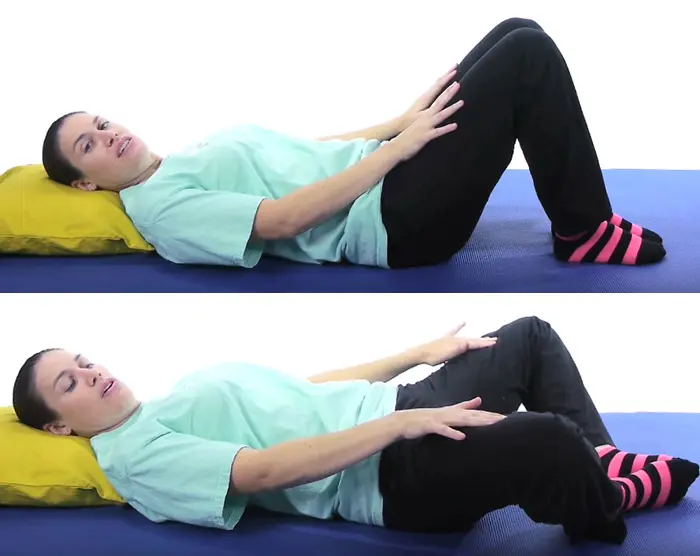
This stretch is important for rehabilitation. It helps release tension in the inner thigh region and enhances flexibility.
Target– Adductor, hip flexors, hamstrings, and glutes.
How To Do Lying Groin Stretch
- Lie down on a mat. Support your head with an exercise block or a pillow.
- Keep your knees flexed and feet flat on the floor and close together.
- Exhale and slowly draw your legs apart. Feel the stretch and hold it for 30 seconds.
- Do not over-stretch. Hold it at a point where you feel the stretch, not pain.
- You may place your hands on your knees to gently press down the knees to stretch your groin muscles.
- Inhale and bring your knees together. Do 3 sets of 5 reps.
2. Adductor Squeeze
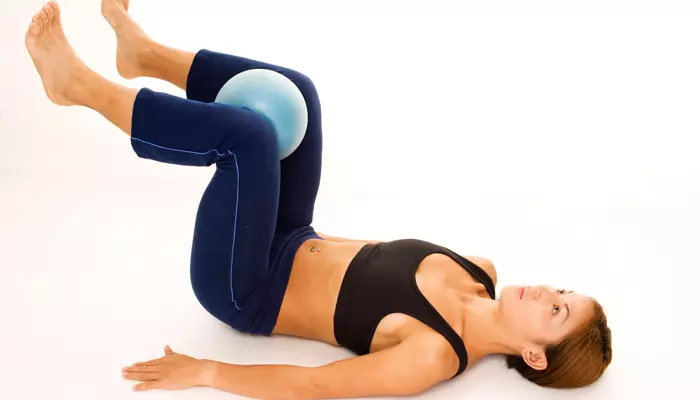
This exercise helps strengthen the inner thigh muscles and improves stability in the hips and pelvis, aiding injury prevention and rehabilitation.
Target – Adductors
How To Do Adductor Squeeze
- Lie down on your back on a mat. Place your hands along the sides of your body.
- Keep your knees pointing upwards and grab a softball in between your knees.
- Gently squeeze the ball to contract your adductor muscles. Hold it for 10 seconds and release. Keep breathing while you do this exercise.
- Do 3 sets of 4 reps.
3. Side Lying Groin Stretch
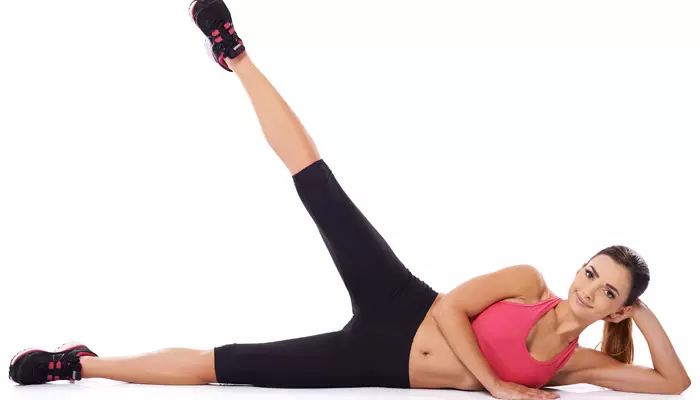
This exercise helps increase hip flexibility and range of motion while relieving tension in the inner thigh muscles.
Target – Adductor, glutes, abductors, and hamstrings.
How To Do Lying Groin Stretch
- Lie down on your left side.
- Support your head with your left hand while keeping both legs straight.
- Slowly lift your right leg in the air as much as you can.
- You may also support your knee with your right hand.
- Hold on this position for 3 seconds to feel the stretch. Do 2 sets of 10 reps.
- Lie on the other side and stretch your left leg.
4. Lying Single Leg Adductor Stretch
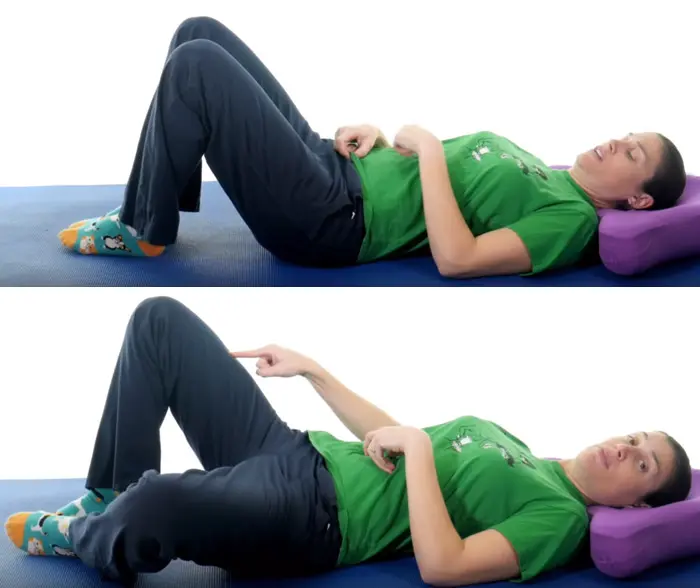
This stretch targets the inner thigh muscles, enhancing flexibility and reducing tightness in the hips and groin.
Target– Adductors, abductors, hip flexors, and glutes.
How To Do Lying Single Leg Adductor Stretch
- Lie down comfortably on a mat, your head on a pillow.
- Keep your knees flexed, feet flat and close together on the floor.
- Drop down one knee with the other knee in the starting position.
- Hold the pose for 3-5 seconds and slowly raise it back to the starting position.
- Do the same with the other leg. Do 2 sets of 5 reps.
5. Lying Internal Adduction
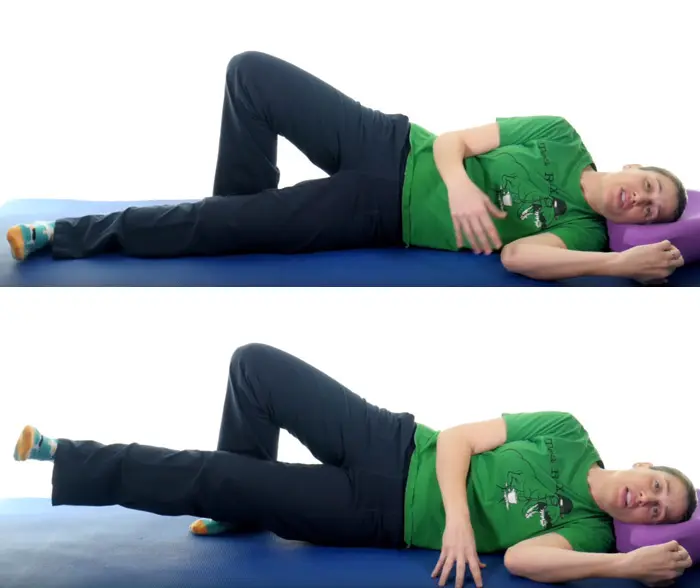
This exercise targets the adductors through controlled inward movement, strengthening the inner thigh muscles and enhancing hip stability.
Target – Adductors, abductors, glutes.
How To Do Lying Internal Adduction
- Lie down on your right side comfortably on a mat, your head on a pillow. Place your left hand in front of you on the mat.
- Flex your left knee and place your left foot on the floor behind your right leg.
- Slowly lift your right leg. Hold this pose for 3 seconds and gently place your right leg back on the floor.
- Do this 10 times before doing the same with the other leg.
6. Seated Groin Stretch
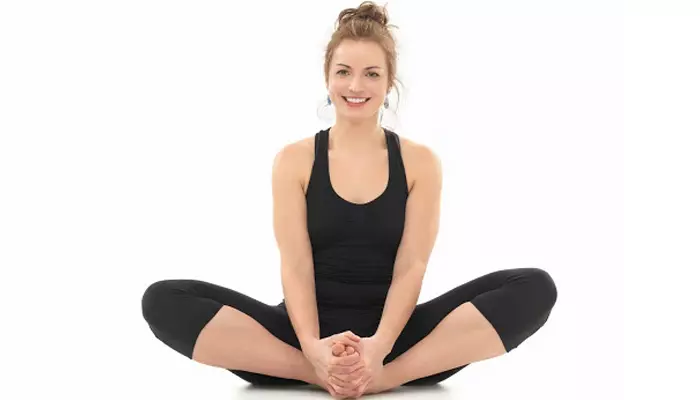
This stretch helps improve hip and groin flexibility and relieves tension in the inner thighs.
Target – Adductors, hip flexors, glutes, quads, hip flexors, and hamstrings.
How To Do Groin Stretch
- Sit on a mat and bend your knees so that your heels are close to your body.
- Keep your back erect and lower your knees such that they touch the floor.
- You may also bend your back a little and use your elbow to put pressure on the knees in a downward direction.
- Release the tension slowly and repeat it a few more times to strengthen the groin muscles. Do 2 sets of 10 reps.
7. Seated Forward Fold Stretch
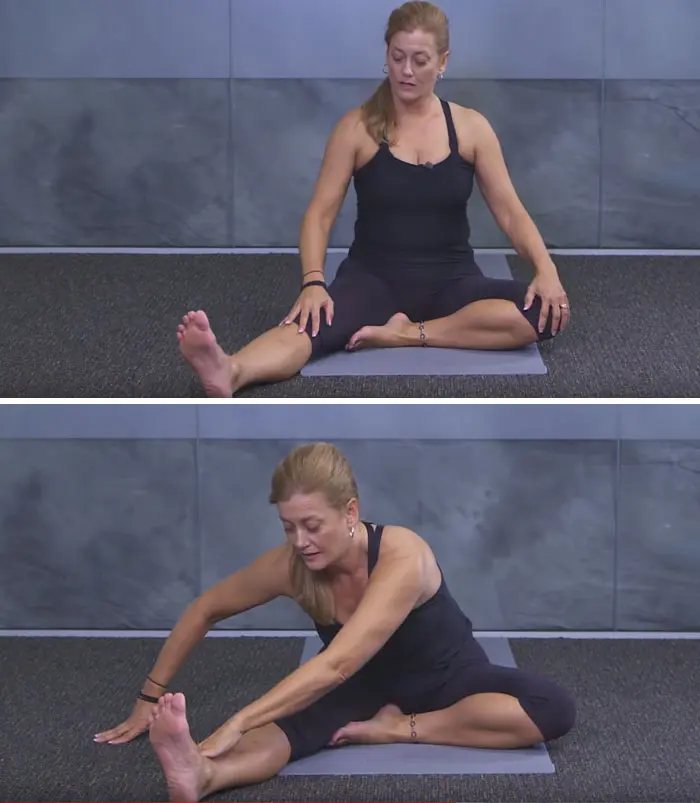
This stretch increases flexibility and releases tension in the hips and spine, lengthening the hamstrings and lower back.
Target – Adductors, hamstrings, calves, and glutes.
How To Do Seated Forward Fold Stretch
- Sit on a mat. Extend your right leg diagonally. Fold the other leg and bring it close to your inner thigh-groin area.
- Roll your shoulders back, extend your spine, and turn your torso slightly toward the right.
- Place your right fingertips on the floor near the leg.
- Place your left palm on the out calf area of your right leg and feel the stretch your hamstring, calves, hips, and groin area.
- Hold this pose for 5 seconds and gently release. Do the same with the other leg as well.
8. Seated Hip Abduction
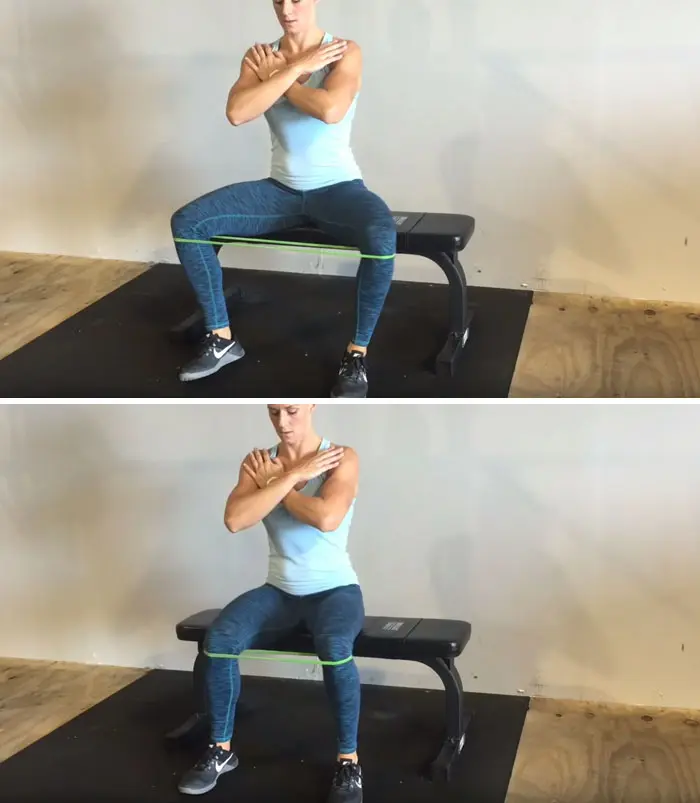
Target – Adductors, abductors, hip flexors, glutes, and hamstrings.
How To Do Seated Hip Abduction
- Sit comfortably on a chair or a bench. Keep your feet shoulder-width apart and place a resistance band just below the knees.
- Cross your arms over your chest, keep your spine erect and shoulders pinched back, and look straight ahead.
- Open your legs outward against the resistance of the band. Also, open your feet, but do not move them from their position.
- Bring the legs back to the initial position.
This is one of the best core strengthening exercises, as it helps improve muscle endurance and stability.
9. Barre Leg Stretch
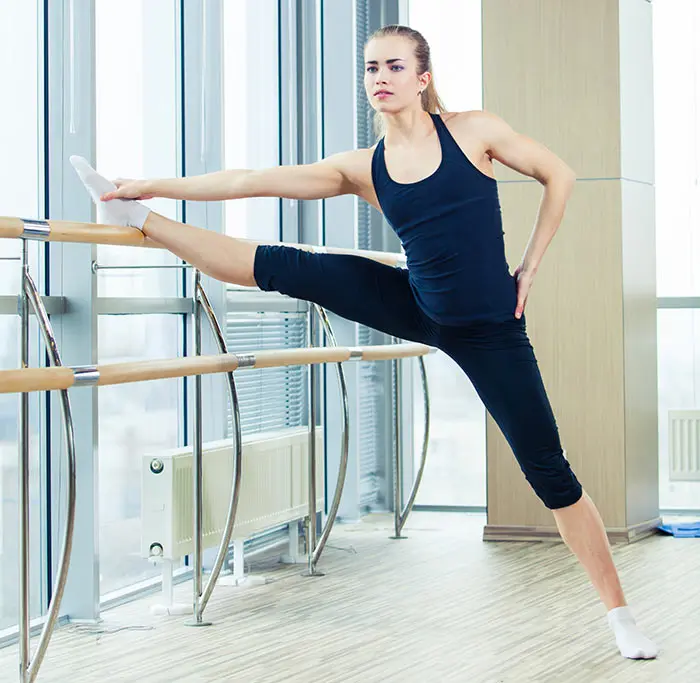
This exercise promotes improved balance and posture and lengthens the hamstrings, calves, and hips.
Target – Adductors, hamstrings, hip flexors, and glutes.
How To Do Barre Leg Stretch
- Stand near a barre bar. Adjust the height to a low position if your groin area is stiff or you are recovering from a recent injury.
- Hold the bar with one hand and place one leg on it. Keep the leg extended.
- Bend toward the extended leg to feel the stretch. Avoid overstretching. Hold the pose for 3 seconds and release.
- Do it with the other leg as well. Do this 3 times.
10. Plie Squat

Target – Adductors, glutes, quads, hip flexors, hamstrings, and quads.
How To Do Power Squats
- Stand with your hands placed on the front of your thighs, near your groin.
- Place your feet wide apart so that your toes are pointing outward on either side.
- Bend your knees slowly and push your hips out. Keep your weight on your heels and raise your hands straight in front of you. Your palms should be facing down.
- Hold for a moment and come back to your initial position by pushing your heels to straighten your legs.
- You may also do this exercise with weights in your hands to increase the intensity. Do 1 set of 8 reps.
Hip strengthening exercises like squats help improve the stability and strength of the muscles around the hips and build resistance.
11. Band Abduction
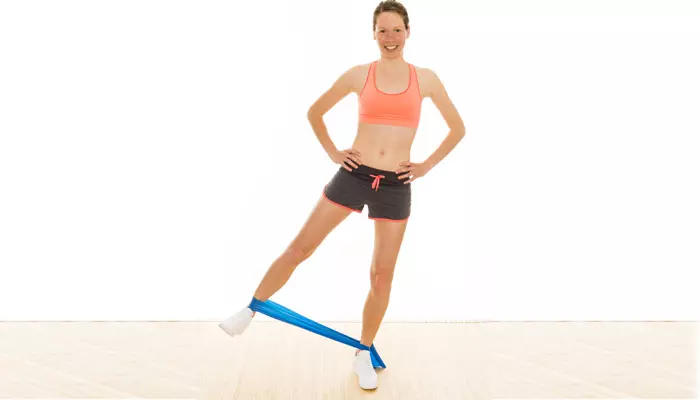
This exercise improves stability and activates the gluteal muscles by strengthening the outer thighs and hip muscles.
Target – Adductors, hip flexors, glutes, hamstrings, and calves.
How To Do Band Abduction
- Stand straight with both the feet placed together. Put a resistance band around your ankles.
- Hold a steady object with your hands for support. You can also do this without any support, depending on your fitness level.
- Keeping your left leg firmly on the floor, raise the right leg on your side, stretching as much as you can.
- Take a pause and bring your leg back to its initial position, releasing the tension of the resistance band.
- Keep your right leg firm, raise your left leg to your sides, stretch the band, and return to the initial position.
- Repeat this exercise several times to strengthen the groin muscles and the knees. It also prevents the falling in of the knees during squatting and running. Do 2 sets of 8 reps.
12. Hip Extension With Band
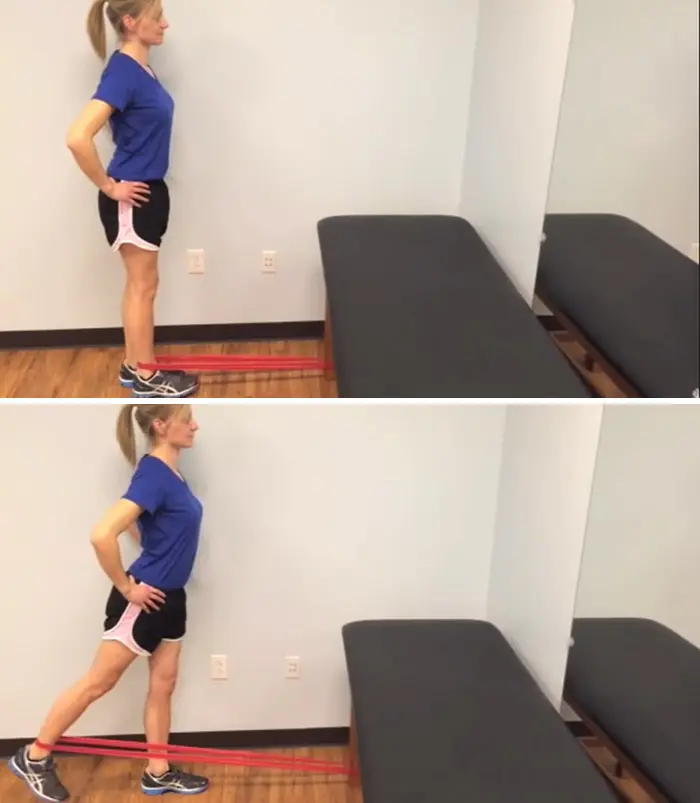
This stretch helps strengthen and stabilize the hips, lower back, and gluteal muscles.
Target –Glutes and hamstrings.
How To Do Hip Extension With Resistance Band
- Wrap the resistance band around your right ankle and tie the other end to a table leg.
- Stand straight with the knees bent a little, hands on your waist, shoulders pinched back, and face the table.
- Pull the leg backward against the resistance provided by the band.
- Return the leg to the starting position.
- Do this with the left leg as well. Do 2 sets of 8 reps.
13. Long Adductor Stretch
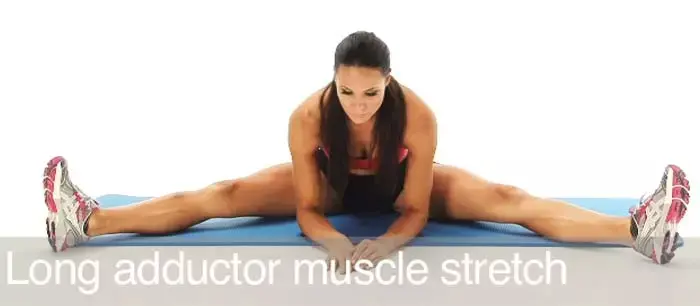
This exercise helps elongate the inner thigh muscles, promoting flexibility and reducing tension in the groin and hip area.
Target – Adductors, hamstrings, hip flexors, glutes, quads, and calves.
How To Do Long Adductor Stretch
- Sit on a yoga mat with your legs extended in front of you.
- Open up your right leg until it is about 45 degrees with the left leg.
- Open your left leg by bringing it to the side, at about 45 degrees from the initial position.
- Use your hands to push both legs back and gently open up the legs a bit more (skip this step if you have a groin injury).
- Bend your body forward and place your forearms on the floor in front of you.
- Count to 5 before bringing your body back up. Do it 3 times.
14. Hip Flexor Stretch
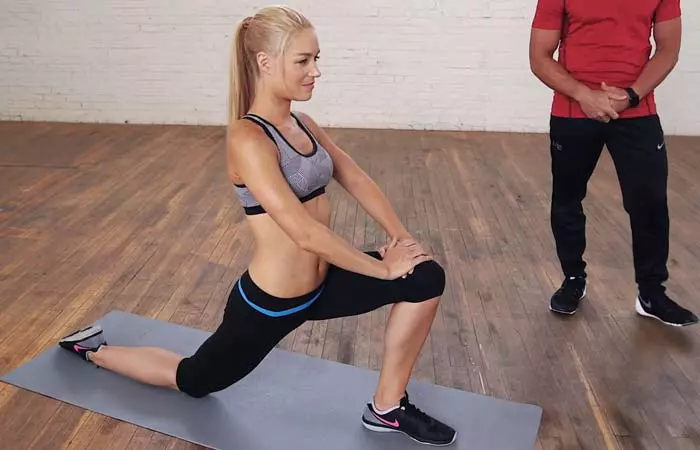
This stretch increases the range of motion and flexibility in the hips and lower back while releasing tension in the hip flexors.
Target – Hip flexors, hamstrings, glutes, quads, calves, and lower back.
How To Do Hip Flexor Stretches
- Stand straight on a mat. Put your right leg forward and go down until your left knee touches the mat.
- Place both your palms on the right knee, point your left toes out, and push your right knee with your palms. At the same time, pull your upper body back. Feel the stretch in your glutes, inner thighs, quads, and abs.
- Hold this pose for 5 seconds and then come back up.
- Do the same with your left leg.
15. Anjaneyasana
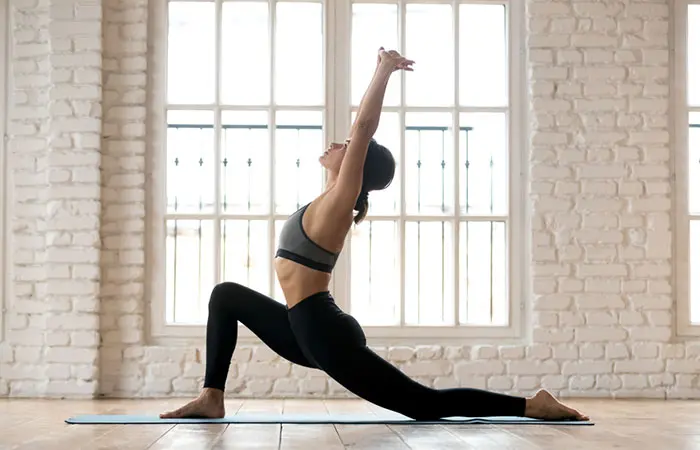
It enhances lower body stability and balance while stretching the quadriceps and hip flexors.
Target – Adductors, glutes, hip flexors, and hamstrings.
How To Do Anjaneyasana
1. Get into a plie squat pose and place your hands on your knees.
2. Turn toward your right, getting into a lunge pose. Place both the hands on your right knee.
3. Slowly place your fingertips on the floor for support and lower your hips. Your left leg will extend back as you do so. Gently place your shin and tarsal joint on the floor.
4. Place your hands on the knee again. Feel the stretch in your groin area. Push your hips down if the stretch is not enough.
6. Hold the pose for 30 seconds. Keep breathing. Do it on the other side as well.
 Quick Tip
Quick Tip16. Butterfly Stretch

This stretch improves flexibility and releases stress in the groin area by opening up the hips and inner thighs.
Target – Inner thighs, hip flexors, and groin muscles.
How To Do Butterfly Stretch
- Sit on the floor. Keep your back straight and extend your legs in front of you.
- Bend your knees so that the soles of your feet come together and the knees drop outward.
- Hold your feet with your hands, interlocking your fingers to create a butterfly-wing shape with your legs.
- Lightly press your knees on the floor using your elbows. Let gravity and your muscles gradually ease your knees closer to the ground.
- Maintain an upright posture with your back straight and shoulders relaxed.
- Hold the stretch for 15-30 seconds, focusing on your inner thighs and groin.
- Slowly release the stretch, bringing your knees back up.
- Repeat the butterfly stretch 2-3 times.
Infographic: How To Avoid Groin Pulls
The bodyweight exercises for groin mentioned above can help strengthen your muscles and prevent injury if performed correctly. But what else can you do to avoid groin strain and manage it at home? Check out the infographic below for all the information you may need.
Some thing wrong with infographic shortcode. please verify shortcode syntax
While your workout routine may target the abs or your lower body muscles, including the strengthening exercises for groin muscles is important too. Plyometric exercises like jumping, running, and walking increase the range of motion and help improve the flexibility and strength of the sensitive groin muscles. Pelvic floor exercises, lower body exercises, light stretches, squeezes, and Hip adductor exercises are all you need to take care of these delicate muscles. Even yoga poses for the groin area like Baddha Konasana, Upavistha Konasana, and Malasana can help you. Doing these 10 mites every day can help improve muscle strength, stamina, posture, and flexibility while reducing the chances of any injury. Agility exercises and balance exercises for the groin area can help improve your overall stability and reduce the risk of groin injuries.
Frequently Asked Questions
How long should you rest a groin injury?
Depending on the severity of the injury, your doctor will tell you how much rest you require. Talk to your doctor about rehabilitation exercises for groin injuries or immediately if you sense any pain in your groin area.
How do you stretch out a pulled groin muscle?
If your groin muscle is pulled, take the help of a physiotherapist to help stretch it. Do not attempt to do it yourself without knowing which muscles you should target.
Can you run with a groin injury?
No, you should not run with a groin muscle injury. Take rest and attend physiotherapy sessions before you regain your strength and form.
How to strengthen the groin muscles?
The groin muscles are delicate and sensitive. You can strengthen them by doing yoga stretches and exercises, like seated adduction and abduction and lying and seated groin stretches. But you must consult your doctor and do these under the supervision of a certified physical therapist.
How to get rid of groin pain?
First, you must see a doctor to know why you are experiencing groin pain. If it is an injury, you must get medical treatment. During your recovery, you may do groin muscle strengthening stretches and exercises. You also need to rest to help the injury heal.
How to open the groin for flexibility?
Flexibility exercises for opening the groin are very important. Do leg exercises like barre leg stretches, lunges, extended side lunges, yoga asanas, and seated leg stretches to improve flexibility. Take the help of a friend to do standing leg extensions.
How long does it take to heal a pulled groin?
It takes 4-6 weeks to heal a pulled groin. You must rest unless your doctor says otherwise. Start doing groin muscles strengthening exercises and stretches only after your doctor gives you permission to start rehabilitation therapy.
How do you fix a sore groin?
Take rest and avoid getting involved in any pain-causing activity. Instead, wrap a towel around a few ice cubes and place them over the affected area 4 times a day.
Is cycling good for groin strains?
Although cycling while having groin strain should be avoided, it can help strengthen the muscles. However, excessive repetitive cycling movements while having a groin strain can aggravate the issue. Speak to your doctor for the ideal treatment option. You can start cycling as a preventive measure once your groin pain has subsided.
Should you massage a pulled groin muscle?
Massages, like a sports massage, can be beneficial in treating a pulled groin. However, it must be done under the supervision of a professional.
Learn 7 easy stretches and exercises to help relieve groin strain pain. Get tips from this video on how to reduce discomfort and improve flexibility.
Personal Experience: Source
StyleCraze's articles are interwoven with authentic personal narratives that provide depth and resonance to our content. Below are the sources of the personal accounts referenced in this article.
i. Pain, pregnancy and potteryhttps://averly.blogspot.com/2015/05/pain-pregnancy-and-pottery.html
Read full bio of Dr. Sudhansu Singh
Read full bio of Ravi Teja Tadimalla
Read full bio of Sindhu Koganti








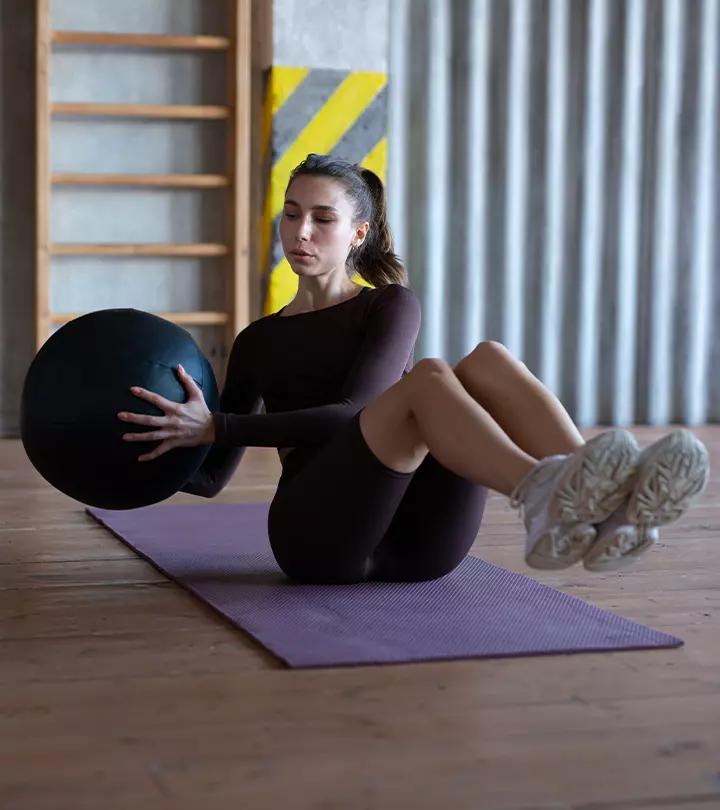
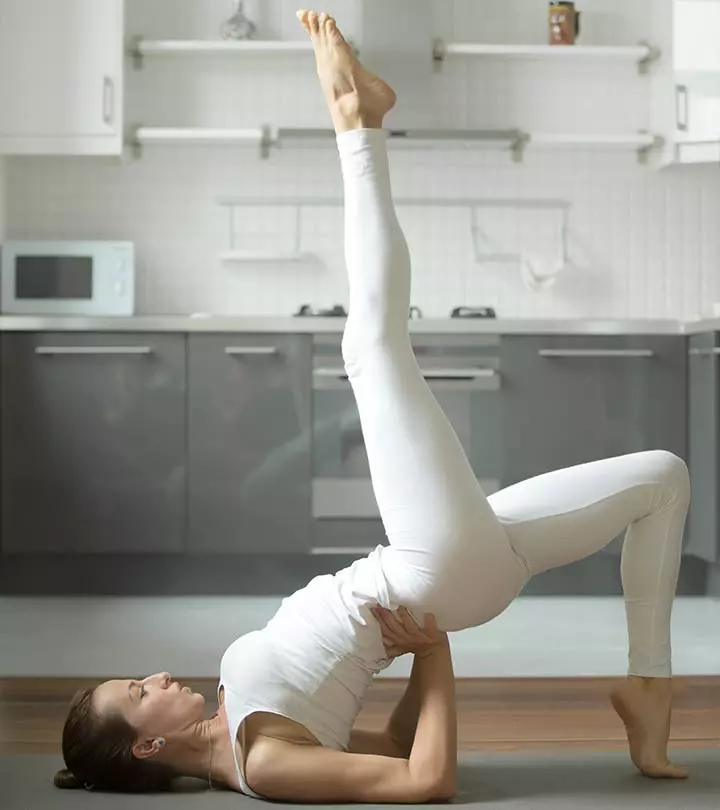
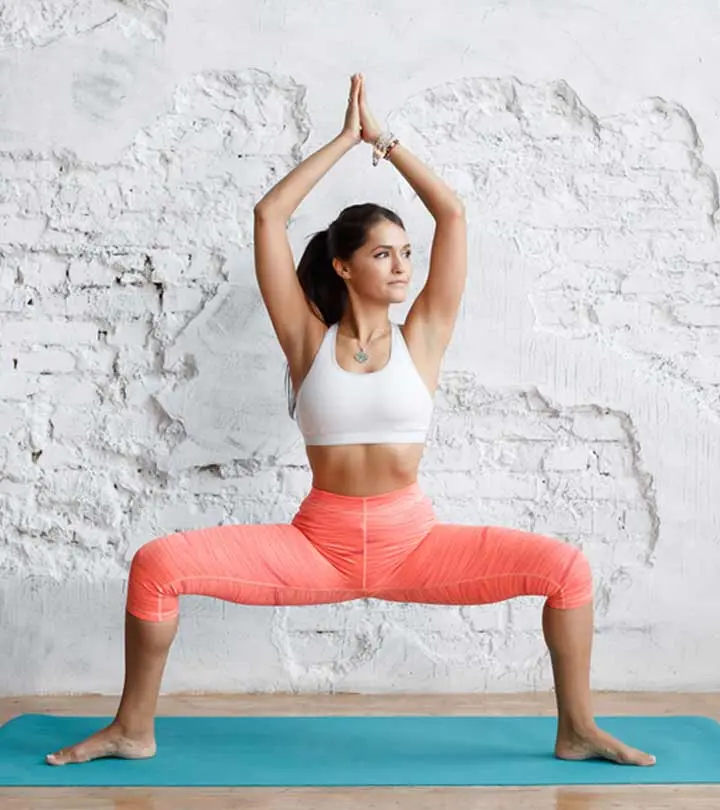
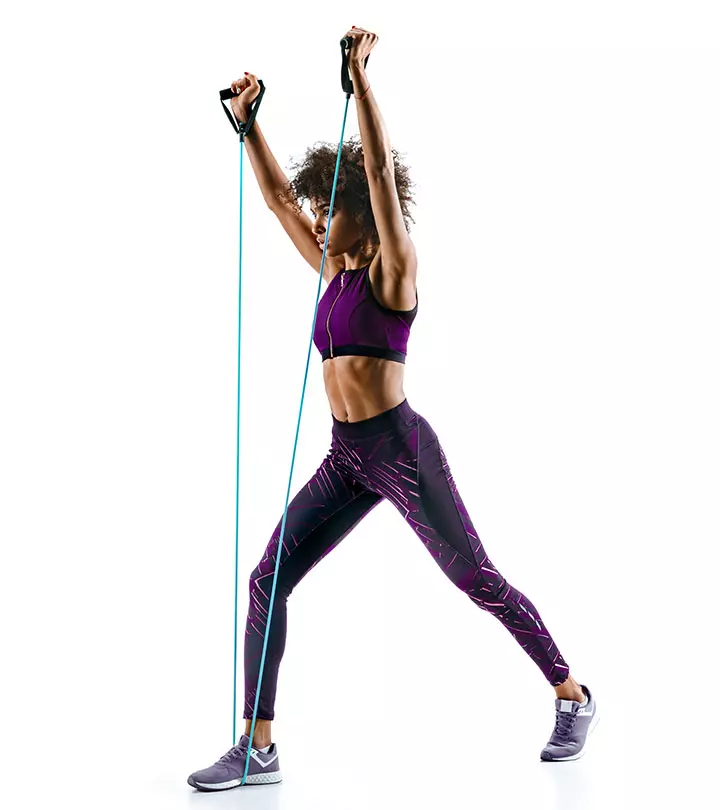
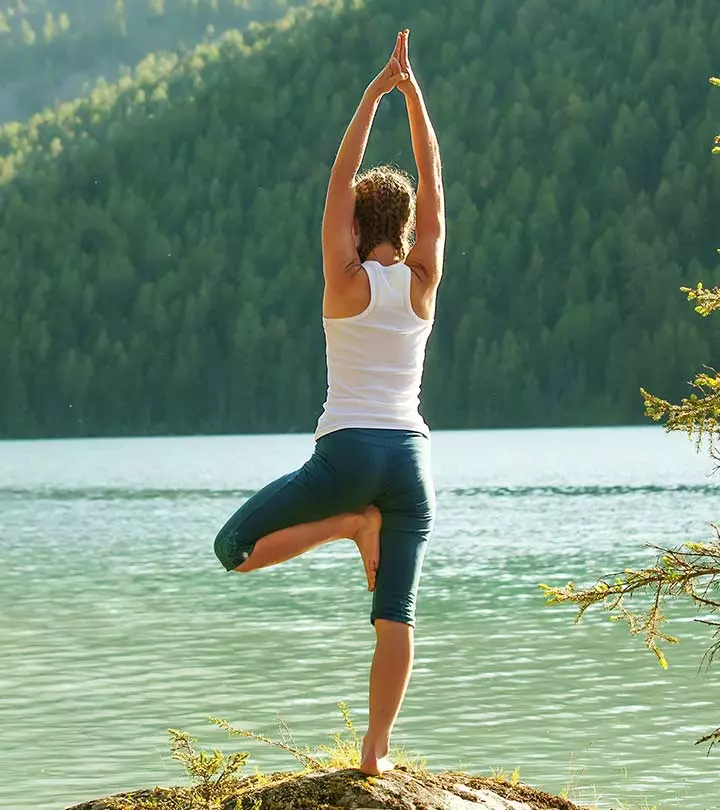
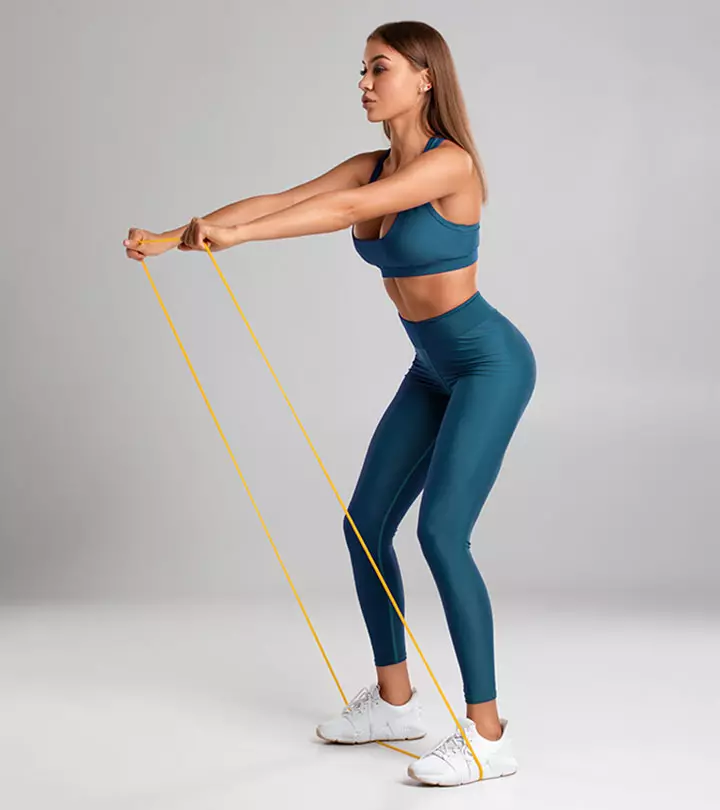
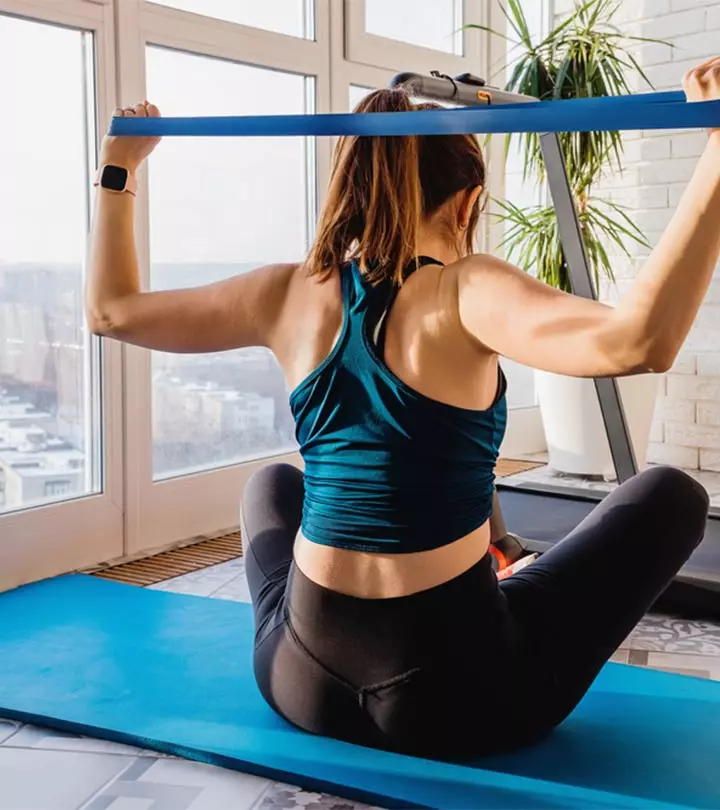
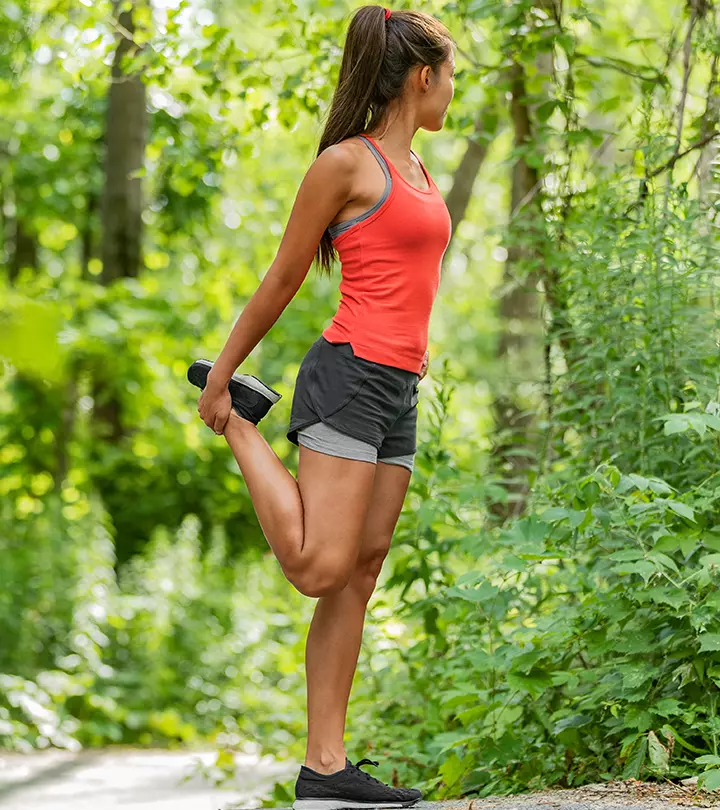
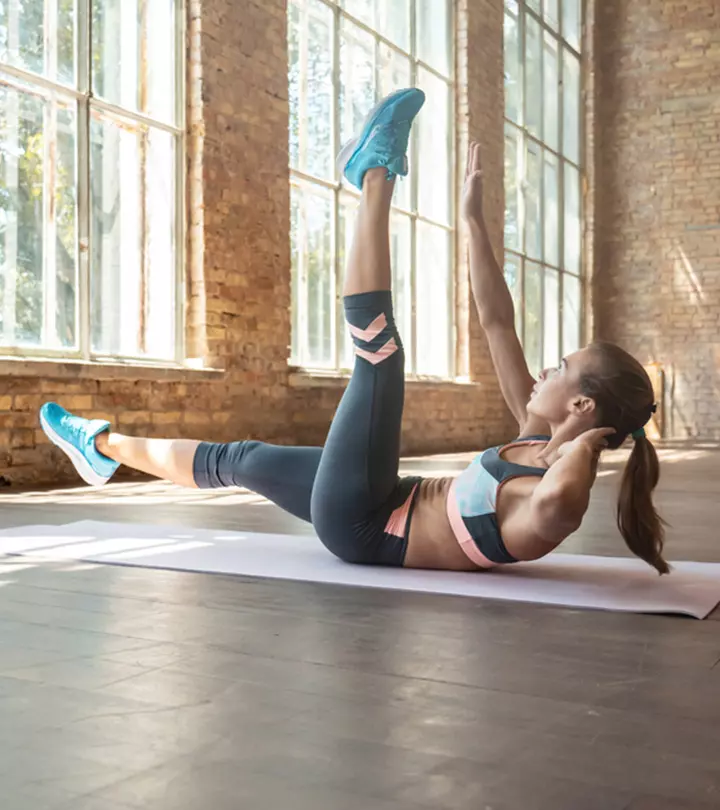

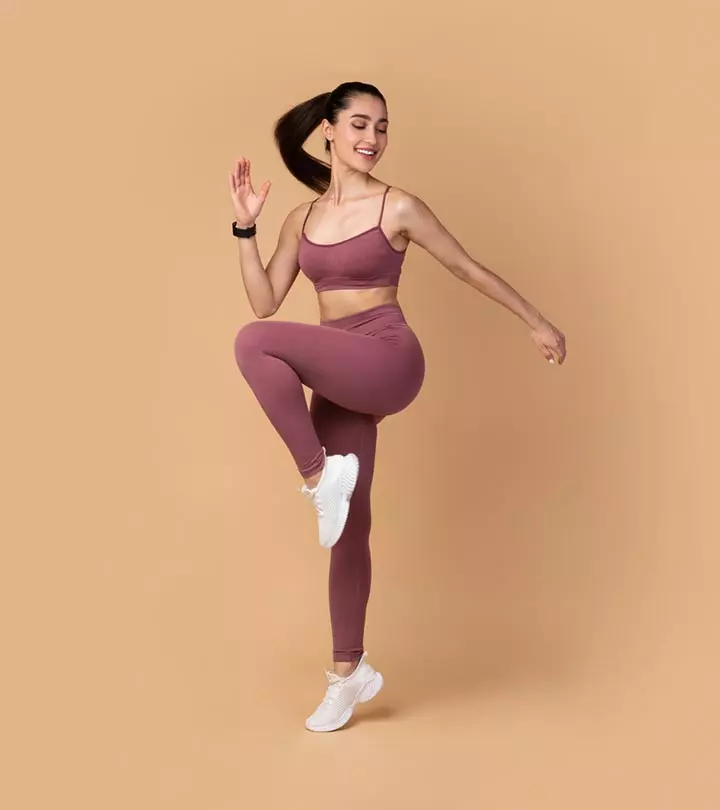

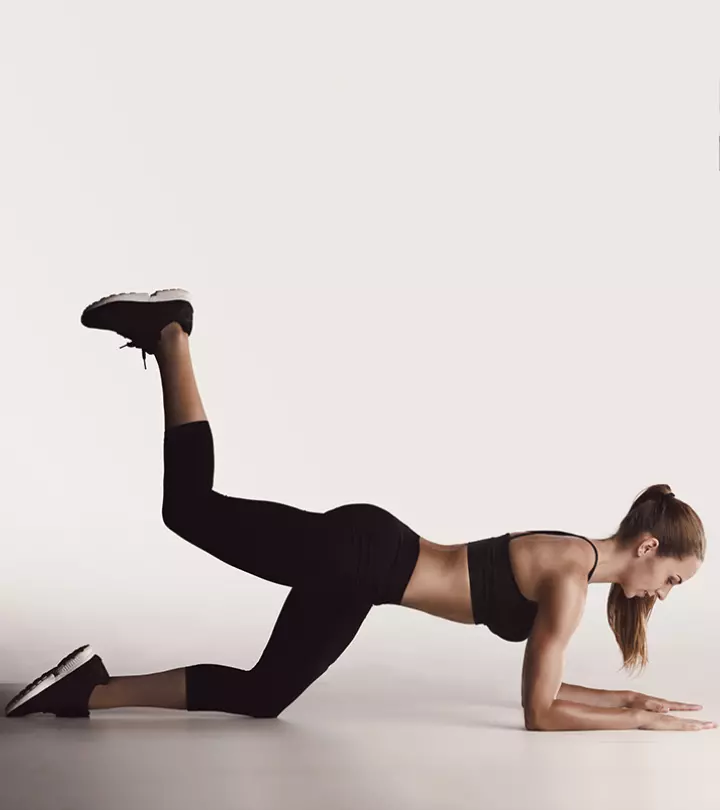
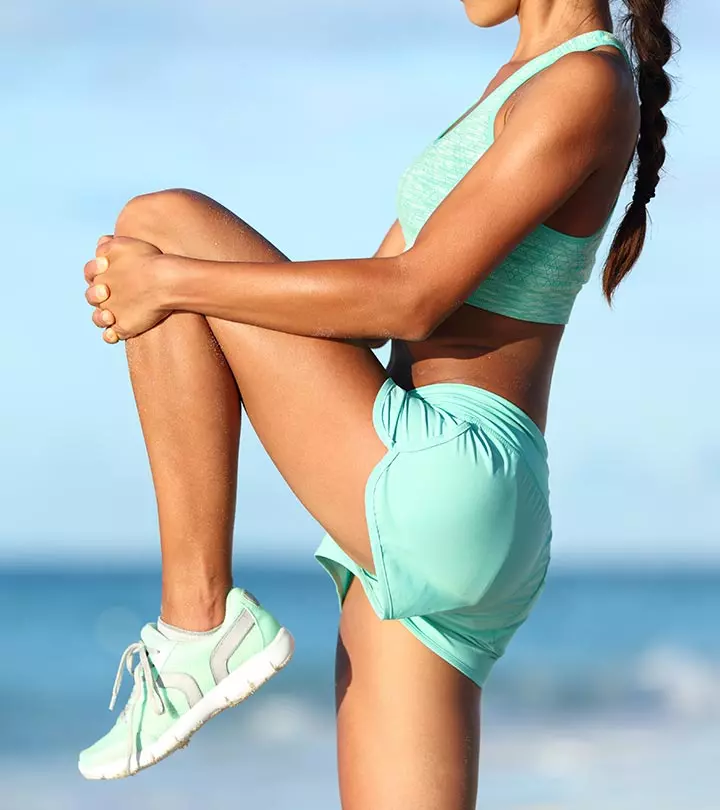
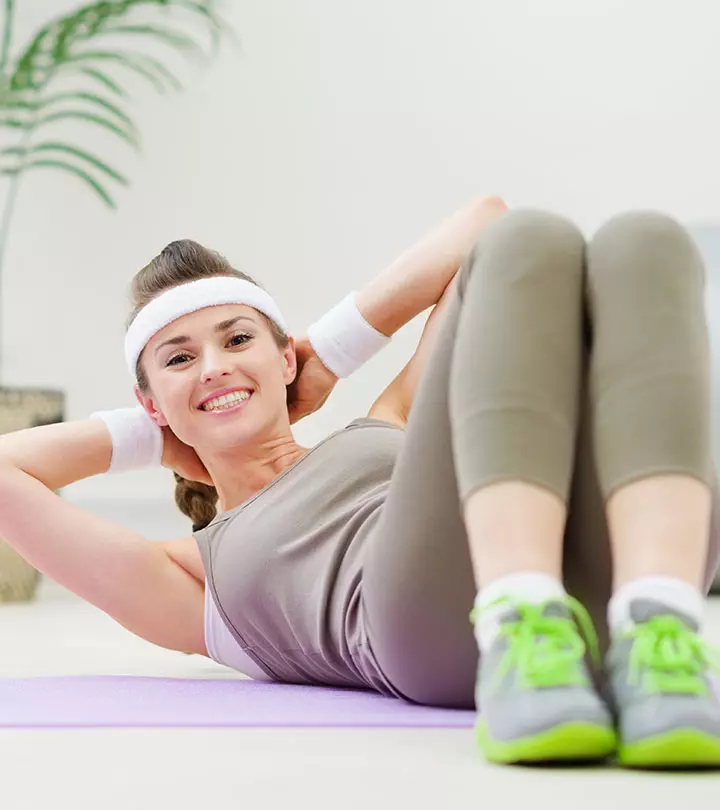

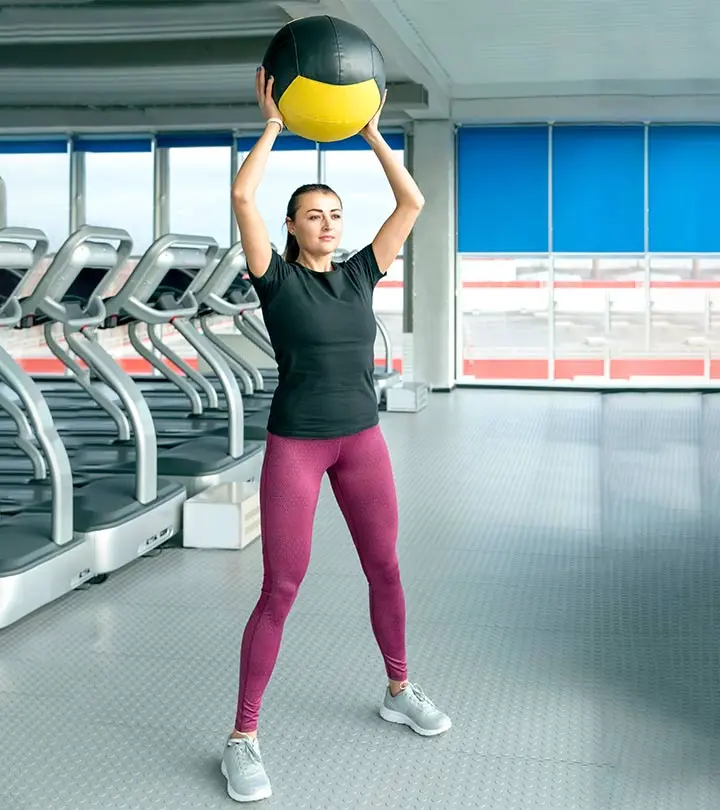


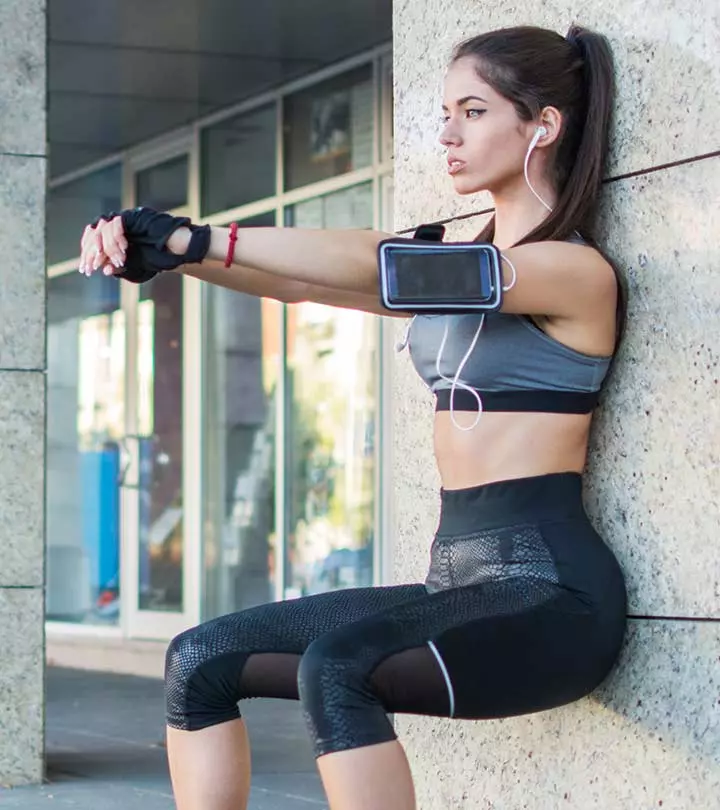
Community Experiences
Join the conversation and become a part of our empowering community! Share your stories, experiences, and insights to connect with other beauty, lifestyle, and health enthusiasts.